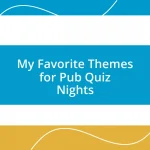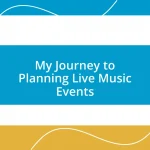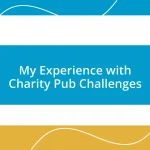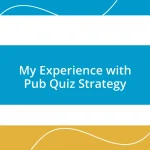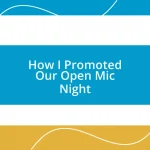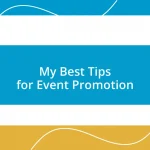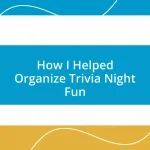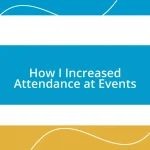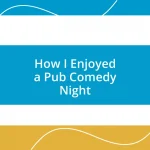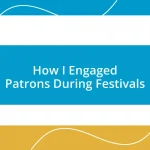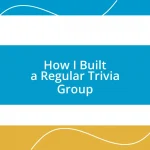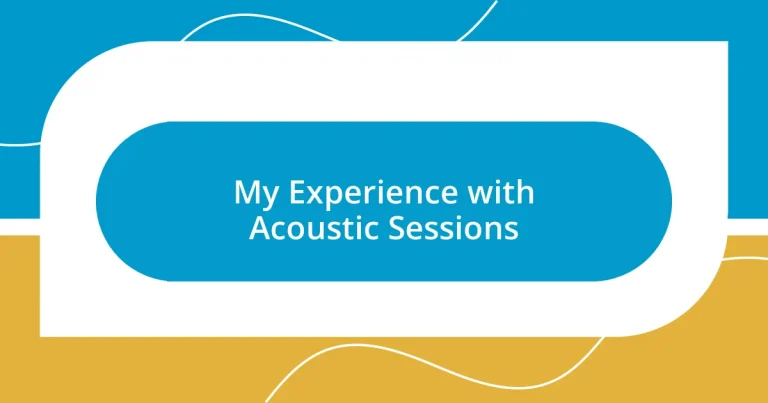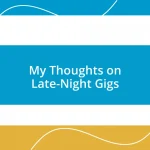Key takeaways:
- Acoustic sessions create intimate musical experiences that foster deep personal connections and vulnerability among both the artist and audience.
- Engaging the audience through storytelling and spontaneous interactions enhances the emotional impact and transforms performances into shared journeys.
- Creating an inviting atmosphere with thoughtful details, like lighting and seating arrangements, and utilizing good sound equipment significantly enhances the acoustic experience.
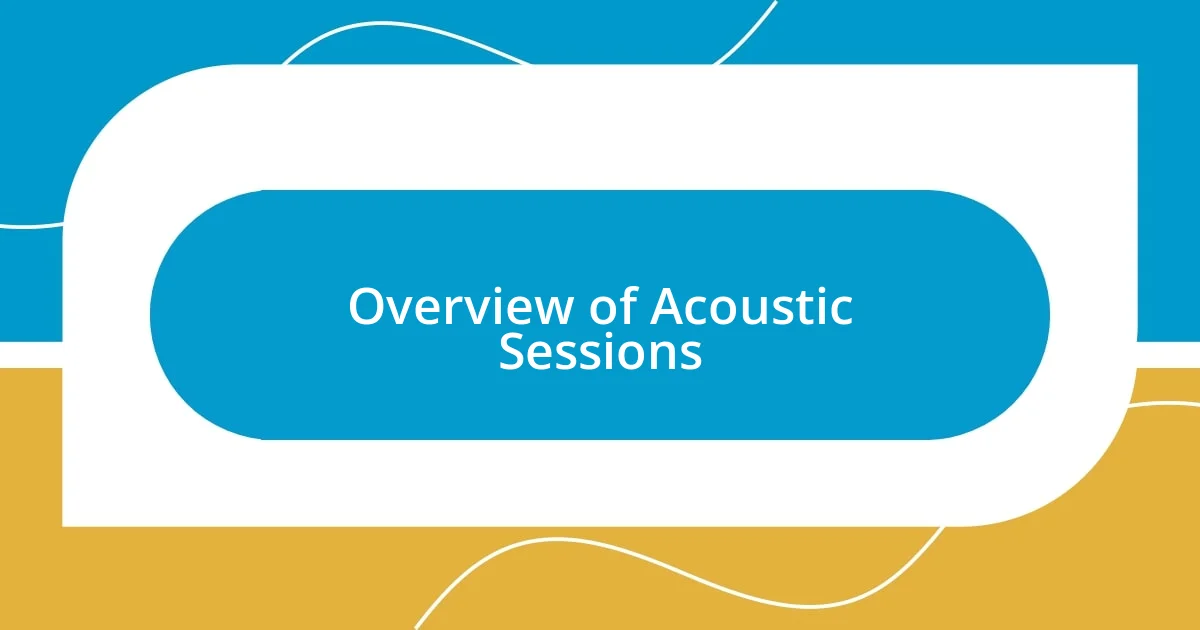
Overview of Acoustic Sessions
Acoustic sessions are uniquely intimate musical experiences that often strip away the layers of production to highlight raw talent and emotion. I remember attending a small café performance where the artist, armed only with an acoustic guitar, connected with the audience on a deeply personal level. It felt like being part of a private conversation, where every note resonated with shared feelings and stories.
These sessions can range from solo performances to collaborative gatherings, emphasizing authenticity and passion. There’s something incredibly powerful about hearing a song performed as the artist intended, without any distractions. Have you ever been struck by how much more moving a familiar song can be when presented in its simplest form? I find that the lack of elaborate staging invites listeners to focus on the lyrics and melody, making the experience profoundly personal.
In my own experience, attending these sessions often leaves me feeling uplifted, as if I’ve just shared a secret with a friend. I’ve noticed a certain magic in how the stripped-back sound fosters a sense of community among the audience. It’s fascinating to think about how acoustic sessions invite us all to be vulnerable, allowing emotions to flow freely in a space filled with art and connection.
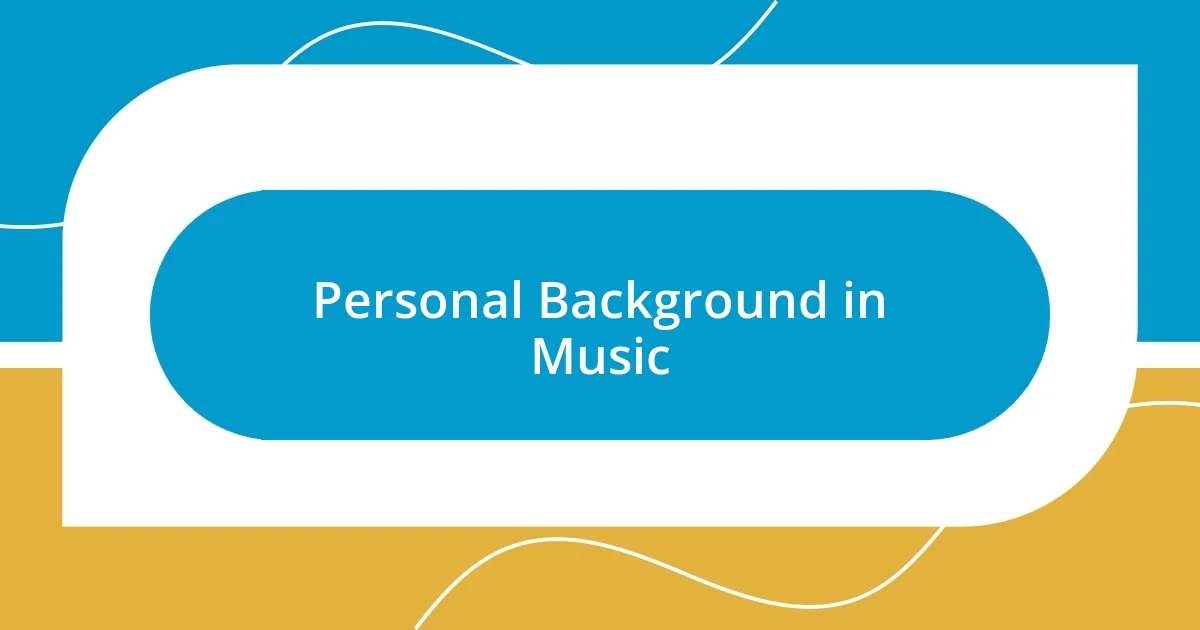
Personal Background in Music
Growing up, music was always a part of my life, entwined with countless memories and experiences. I played the piano for several years; those moments of practicing in solitude taught me the value of dedication and self-expression. Each note carried emotions that words often couldn’t capture, creating a unique connection to both the music and myself.
- I remember my first open mic night—my hands shook as I took the stage, but the warmth from the audience melted my nerves.
- Jamming with friends was a weekly ritual; those evenings fostered an unspoken bond through shared laughter and musical explorations.
- Listening to my favorite acoustic artists sparked a sense of inspiration that pushed me to pen my own songs, grappling with my thoughts through melodies.
Those experiences shaped my understanding of music as a language of emotion, allowing for moments of vulnerability that I still cherish.
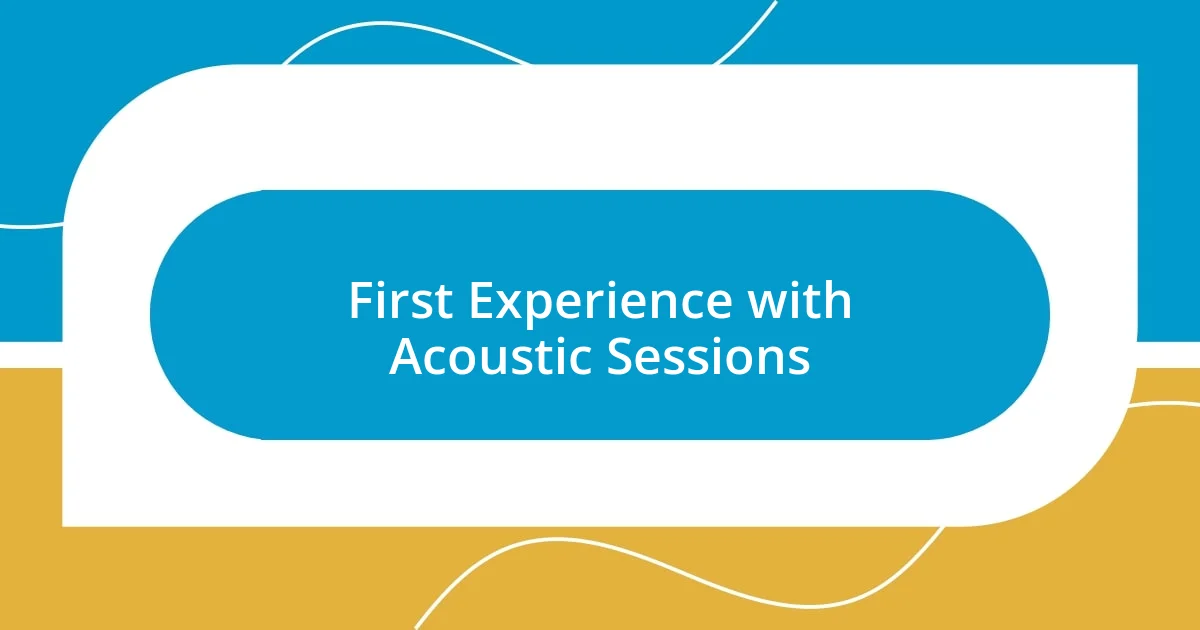
First Experience with Acoustic Sessions
Attending my first acoustic session was like stepping into a hidden world. I remember the soft glow of candlelight flickering around the cozy venue, creating an atmosphere that felt both inviting and magical. The artist began strumming a gentle tune, and with each chord, I felt the tension of the day melt away. It was as if time stood still, and for that brief moment, there was only the music and the emotions it stirred in me.
What struck me most was the rawness of the performance. Unlike larger concerts where the focus can often be lost in the noise, this intimate setting allowed me to connect deeply with the artist. I could see the passion on their face, hear the quiver in their voice, and feel the authenticity behind every note. I vividly recall when they transitioned to a heart-wrenching ballad; tears welled up in my eyes as I related to the lyrics, feeling as if the artist was narrating my own story.
I left that night with a renewed sense of appreciation for the artistry of acoustic music. It taught me how powerful a simple song, stripped of its production, could be. In fact, I often find myself reminiscing about that first session, realizing that those connections—both with the music and the people around me—are what make acoustic performances unforgettable.
| Aspect | My First Acoustic Session |
|---|---|
| Setting | Cozy, candlelit venue |
| Emotions | Intense connection, vulnerability |
| Artist Interaction | Visible passion, storytelling |
| Music Style | Stripped down, raw |
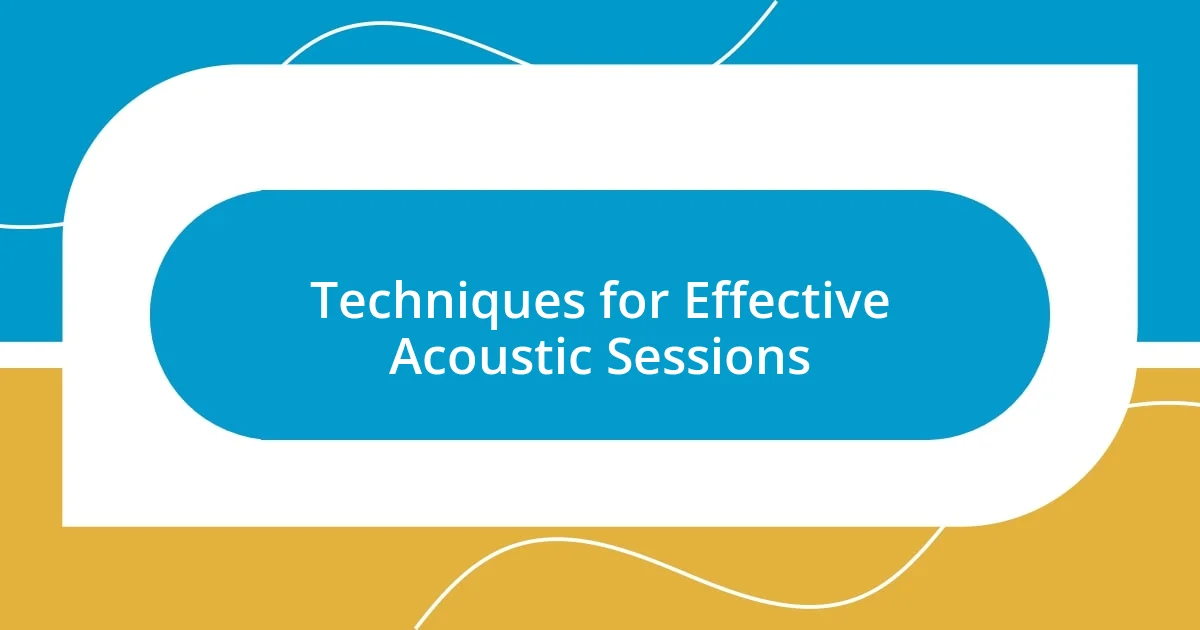
Techniques for Effective Acoustic Sessions
Fostering an intimate atmosphere is crucial for successful acoustic sessions. I recall a time when I set up a small session in my living room, inviting friends over for an evening of music. By dimming the lights and scattering a few candles around, the environment instantly became more personal. It’s amazing how a simple shift in ambiance can encourage everyone to let their guards down and fully immerse themselves in the music.
Another technique that I’ve found to be particularly effective is engaging the audience through storytelling. I’ll often share the inspiration behind a song or a meaningful experience tied to it. When I did this during a recent acoustic night, I noticed the audience leaning in closer, hanging onto every word. It made the performance feel like a shared journey rather than just a series of notes. How do you connect with your listeners? Sharing your story can create a bond that lingers long after the last chord has been played.
Lastly, practicing dynamics—playing softly in some parts and then building up to a stronger delivery—can significantly impact the emotional experience of the session. I experimented with this approach in my last session, varying my volume and intensity to highlight specific phrases. The shift drew attention and evoked a responsive energy from the audience. I noticed heads nodding and feet tapping in sync with the music. This back-and-forth creates a dialogue that turns the performance into a lively conversation. Isn’t it fascinating how effective these subtle shifts can be in connecting with others?
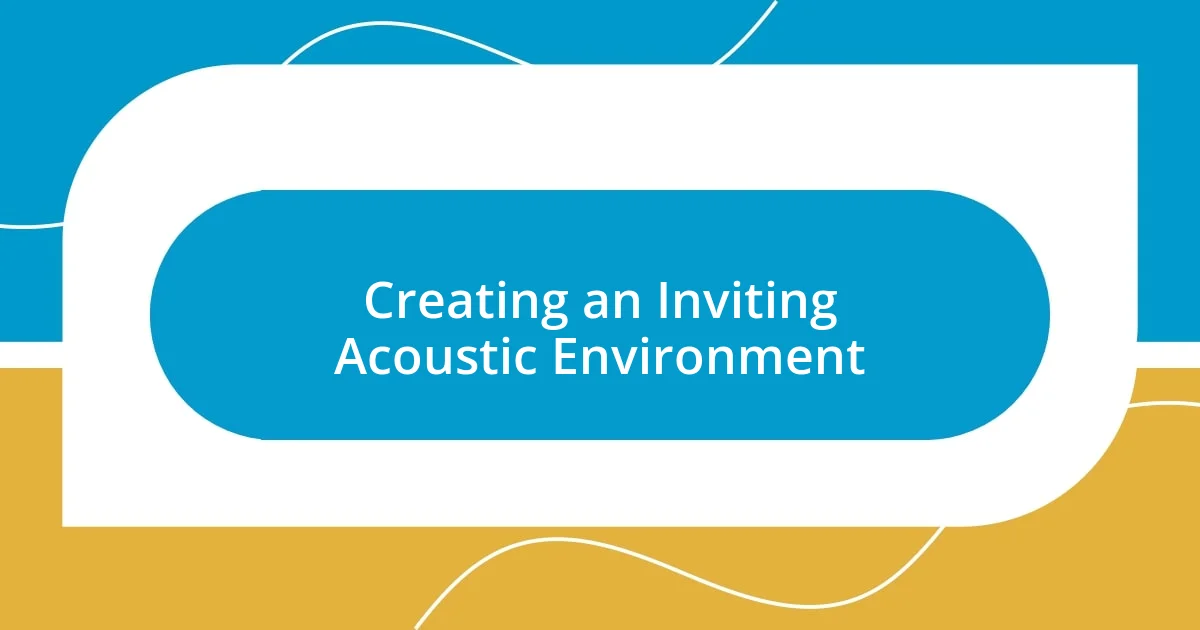
Creating an Inviting Acoustic Environment
Creating an inviting acoustic environment goes beyond just the music; it’s about the details that set the mood. During one of my own sessions, I chose to hang fairy lights across the room. The soft twinkle added a whimsical touch that made everyone feel at home. I could see the effect immediately; guests settled in with a sense of comfort that made the night feel special. Isn’t it interesting how something as simple as lighting can transform a space?
The arrangement of seating can also play a pivotal role. I once pulled together mismatched chairs and cushions on the floor, encouraging a laid-back vibe. It felt more like hanging out in someone’s living room than attending a formal concert. That inclusion made everyone feel part of something intimate. When was the last time you sat somewhere that made you feel cozy and involved? There’s a certain magic in creating spaces where people can relax and lose themselves in the moment.
Lastly, I never underestimate the power of good sound equipment. In one memorable session, I invested in a quality microphone that captured every nuance of my voice. When I hit those delicate notes, the warmth of the sound filled the room, wrapping around the audience like a gentle hug. It made me realize that the right tools can elevate the whole experience, allowing connections to flourish through music. Ensuring clarity and depth in the sound invites listeners to lean in closer, don’t you think?
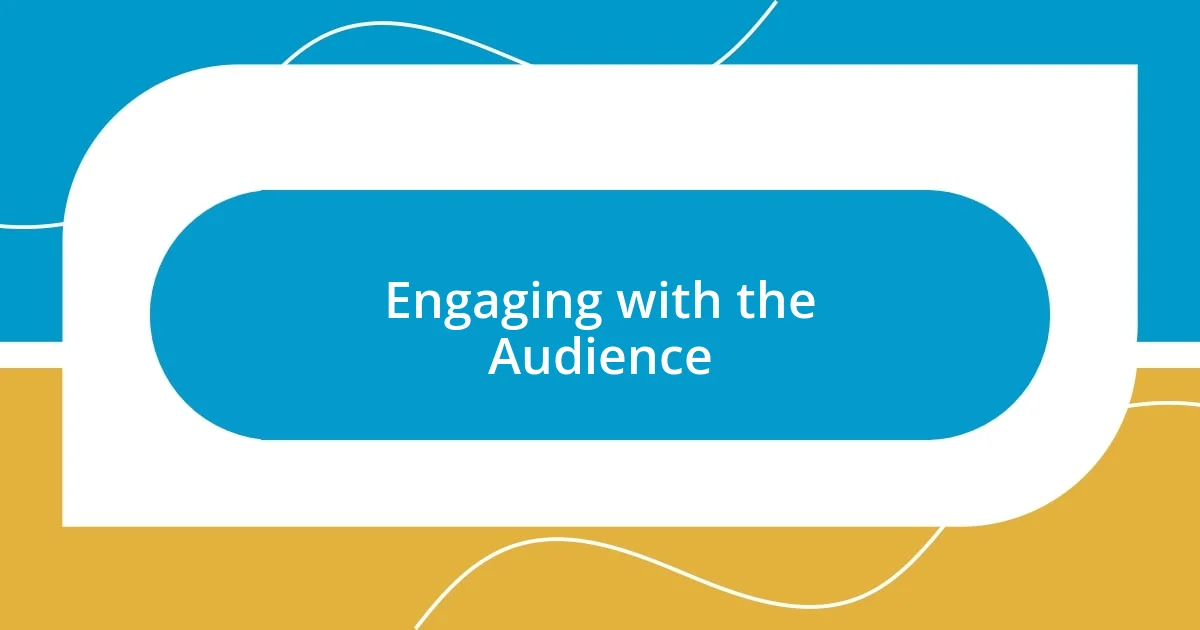
Engaging with the Audience
There’s something uniquely powerful about making eye contact with your audience. I remember one night when I was performing at a local café; I intentionally scanned the room and locked eyes with people as I sang. In those brief moments, I could feel a mutual energy exchange, almost like we were sharing the same breath. This connection deepens the experience for both the performer and the audience, transforming the session into a communal celebration of music. Have you ever felt that surge of connection in a crowd?
Another way to engage with the audience is through spontaneous interactions. During one particular session, a guest called out a request for a song I hadn’t planned to play. Instead of brushing it off, I hesitated for a second and then decided to go for it. The atmosphere shifted in an instant; laughter erupted, and people swayed along to a tune that was very much “in the moment.” It reminded me that while rehearsed performances have their place, the unexpected moments can ignite a spark of joy that resonates long after the last note fades. How often do you allow spontaneity to enrich your performances?
Finally, incorporating audience participation always brings an electric vibe to acoustic sessions. I often invite listeners to join in on the chorus or hum along during certain parts, creating a sense of camaraderie. One evening, I handed out simple percussion instruments like shakers and tambourines. Watching everyone light up and engage was infectious; it transformed a solitary experience into a group celebration. When was the last time you felt like you were part of something bigger than yourself? The magic happens when listeners become active participants in the story you’re weaving through music.
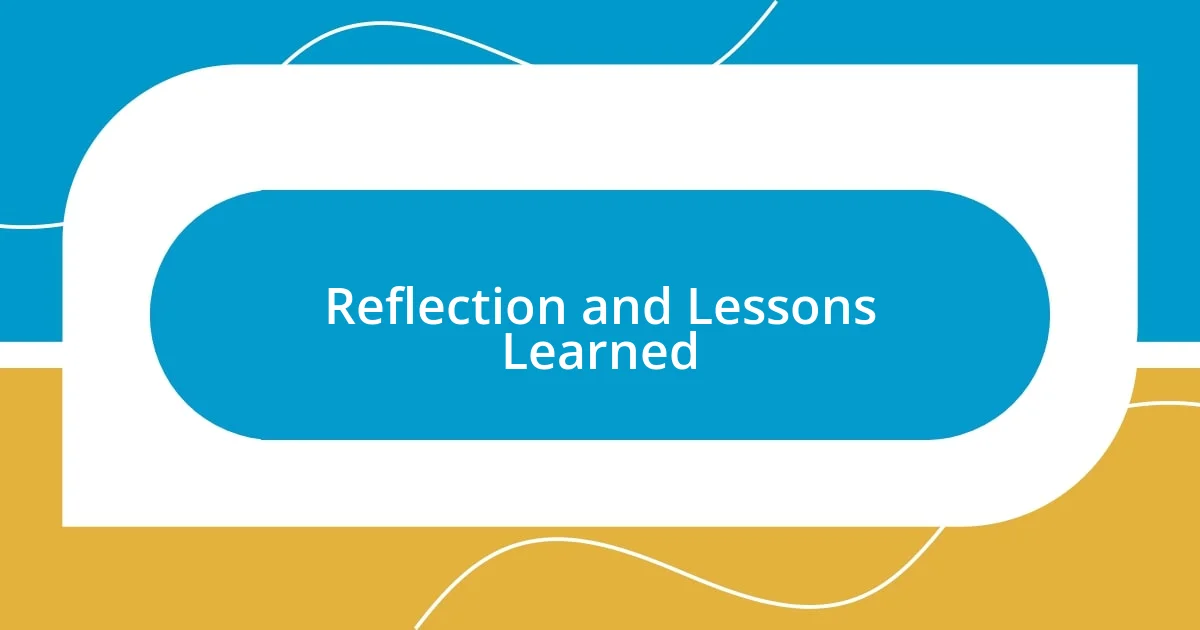
Reflection and Lessons Learned
I’ve come to realize that each acoustic session is not just a performance; it’s a mirror reflecting my growth as an artist. One night, I failed to hit some high notes, which left me feeling vulnerable in the moment. But as I looked out into the crowd, I noticed supportive smiles and nods encouraging me to keep going. It struck me how connection takes precedence over perfection. Have you ever felt that connection outweigh a mistake?
On another occasion, I decided to share a story behind a song before performing it. The sincerity in my voice led to an unexpected warmth in the room. I saw people leaning in, their faces softening with understanding. That moment taught me the value of vulnerability in artistry. It’s a reminder that my experiences are valuable; they invite empathy and understanding from the audience. How often do you share your story with others?
The lessons I learned from these sessions are multi-faceted. There’s an exhilarating balance between preparation and spontaneity. I’ve learned that the real magic often emerges from those unplanned moments—like when a guest joins me on stage for an impromptu duet. It becomes a shared experience, echoing in both our hearts and creating lasting memories. Isn’t it fascinating how music has this unique ability to weave people together beyond the initial intention?
